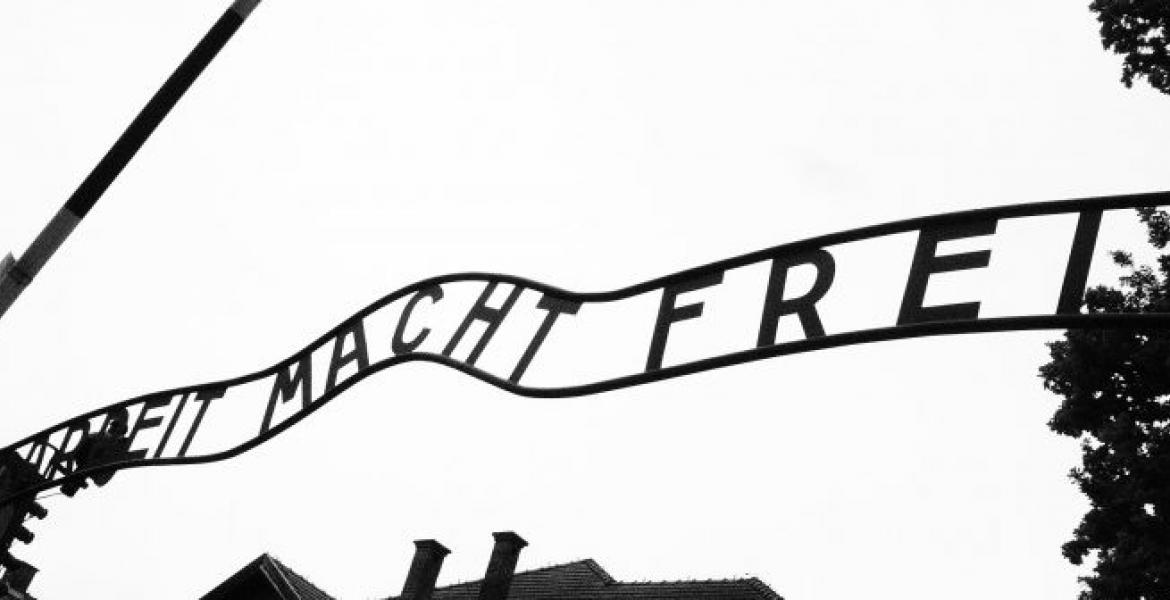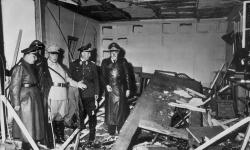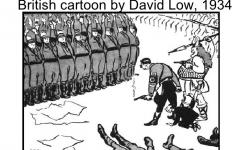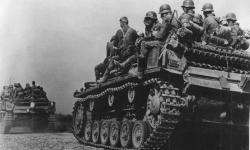The Wannsee Conference
Key facts about the Wannsee Conference
- The Wannsee Conference was held on 20 January 1942.
- Its purpose was to consider the organisation of the Final Solution.
- It brought together many different departments with an interest in exterminating Europe's Jews.
- It was a stepping stone towards organised genocideThe deliberate killing of a large group of people, especially those of a particular nation or ethnic group..The deliberate killing of a large group of people, especially those of a particular nation or ethnic group. The deliberate killing of a large group of people, especially those of a particular nation or ethnic group.
People you need to know
- Adolf Eichmann - specialist on the 'Jewish question' responsible for managing the logistics of the Final Solution.
- Reinhard Heydrich - senior group leader of the SSShort for Schutzstaffel, it was a major Nazi paramilitary organisation which, among other things, was primarily responsible for the implementation of the Final Solution.Short for Schutzstaffel, it was a major Nazi paramilitaryA group organised along military lines. organisation which, among other things, was primarily responsible for the implementation of the Final Solution. Short for Schutzstaffel, it was a major Nazi paramilitaryA group organised along military lines. organisation which, among other things, was primarily responsible for the implementation of the Final Solution. and chief of police, tasked with organising the Wannsee Conference.
- Adolf Hitler - leader of the Nazi Party and Führer of Germany.
The Wannsee Conference of 20 January 1942, was a cross-departmental meeting of the Nazi government. Its goal was brutally and clinically simple: to organise the final solution to the Jewish question.
Nazi anti-SemitismPrejudice against Jews.Prejudice against Jews. Prejudice against Jews.
Nazi ideologyA system of ideas and ideals.A system of ideas and ideals. opposed Jews, not as followers of a specific faith, but as a race that was blamed for all that the Nazis considered wrong with the world. Many believed, or allowed themselves to go along with, the notion that an international collection of Jews, in banking, the media, and government, were aiming to control the world. According to this belief, Jews were responsible not only for the defeat of Germany in the First World War, but also for the banking collapse the following decade, and for CommunismA theory of system of government and social organisation where property is owned collectively and each person contributes and receives according to their ability and needs.A theory of system of government and social organisation where property is owned collectively and each person contributes and receives according to their ability and needs. A theory of system of government and social organisation where property is owned collectively and each person contributes and receives according to their ability and needs. in the Soviet UnionThe Union of Soviet Socialist Republics (USSR) or Soviet Union, was a Marxist-Leninist state covering much of eastern Europe, Russia and Asia between 1922 and 1991.The Union of Soviet Socialist Republics (USSR) or Soviet Union, was a Marxist€“Leninist state covering much of eastern Europe, Russia and Asia between 1922 and 1991. The Union of Soviet Socialist Republics (USSR) or Soviet Union, was a Marxist€“Leninist state covering much of eastern Europe, Russia and Asia between 1922 and 1991. . Nazi propagandaBiased and misleading information used to promote a political cause or point of view.Biased and misleading information used to promote a political cause or point of view. Biased and misleading information used to promote a political cause or point of view. showed them corrupting the minds of good German men by planting pacifistA person who believes that war and violence are unjustifiable, or the belief that war and violence cannot be justified.A person who believes that war and violence are unjustifiable, or the belief that war and violence cannot be justified. A person who believes that war and violence are unjustifiable, or the belief that war and violence cannot be justified. , socialist , and bourgeois ideas in newspapers, books, and entertainment, seducing good German women, corrupting German blood with their debauched ways, and corrupting society with their money, business and control of the legal profession. As such, something had to be done.
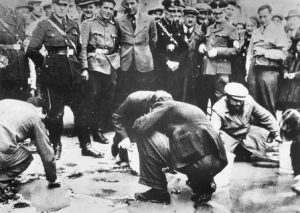
With hindsight, it is easy to tell the direction of Nazi thought against Jews from an early stage. Looking for a scapegoatA person who is blamed for the wrongdoings, mistakes, or faults of others.A person who is blamed for the wrongdoings, mistakes, or faults of others. A person who is blamed for the wrongdoings, mistakes, or faults of others. for the problems following the First World War and the Weimar RepublicThe unofficial name for the German state between 1919 and 1933., Hitler was quick to use the anti-Semitism that was already prevalent in Germany. The 600-plus pages of rant and waffle that Hitler published in Mein Kampf frequently mention the need to 'exterminate mercilessly' and 'to wipe out the vermin' that was 'international Jewry'. Adolf Hitler, Mein Kampf (Ralph Manheim trans.) London: Pimlico (1992) p.155 In the 1920s and early 1930s, the Munich Post wrote chillingly prescient articles about the treatment Jews could expect under a Nazi regime, including mentioning in 1931 a Nazi 'final solution', where 'it is proposed to use the Jews in Germany for slave labour or for cultivation of the German swamps administered by a special SS division.'
Adolf Hitler, Mein Kampf (Ralph Manheim trans.) London: Pimlico (1992) p.155 In the 1920s and early 1930s, the Munich Post wrote chillingly prescient articles about the treatment Jews could expect under a Nazi regime, including mentioning in 1931 a Nazi 'final solution', where 'it is proposed to use the Jews in Germany for slave labour or for cultivation of the German swamps administered by a special SS division.' ‘The Jews in the Third ReichLiterally meaning the third realm or empire. It is the name used to describe Nazi Germany, from 1933 until 1945.Literally meaning the third realm or empire. It is the English name used to describe Nazi Germany, from 1933 until 1945.’ in the Munich Post, 9 December 1931, quoted in Ron Rosenbaum, Explaining Hitler: the Search for the Origins of his Evil, London: Macmillan (1998) p.43
‘The Jews in the Third ReichLiterally meaning the third realm or empire. It is the name used to describe Nazi Germany, from 1933 until 1945.Literally meaning the third realm or empire. It is the English name used to describe Nazi Germany, from 1933 until 1945.’ in the Munich Post, 9 December 1931, quoted in Ron Rosenbaum, Explaining Hitler: the Search for the Origins of his Evil, London: Macmillan (1998) p.43
After the Nazi takeover of power, the increasingly repressive laws, outbreaks of violence, and the terrorA period of violence that occurred after the start of the French Revolution, marked by mass executions of 'enemies of the Revolution'. A period of violence that occurred after the start of the French Revolution, marked by mass executions of 'enemies of the Revolution'. of KristallnachtOr Night of the Broken Glass, was a pogrom against Germany's Jews on 9-10 November 1938.Or Night of the Broken Glass, was a pogrom against Germany's Jews on 9-10 November 1938. Or Night of the Broken Glass, was a pogrom against Germany's Jews on 9-10 November 1938. were all signs that anti-Semitism, if not growing, was certainly getting louder. By the time of the Wannsee Conference, many hundreds of thousands of Jews – and other targets of the Nazi regime, such as gypsies, the mentally and physically disabled, and homosexuals – had already been killed. Methods were ad hocCreated or done for a particular purpose as necessary.Created or done for a particular purpose as necessary. , determined by the situation and those locally in command, but included mass shootings, starvation, and experiments with gas.
World war
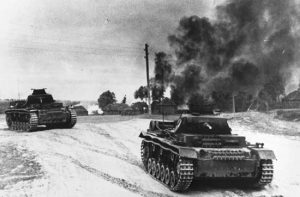
It was only after the Japanese attack on Pearl Harbour, and the start of a disastrous German winter on the eastern front, that Nazi practice crystallised. Hitler had prophesied a number of times, most notably in a speech to the ReichstagDuring the Weimar Republic, the Reichstag was a legislative body in Germany. After the Nazi takeover, it became purely a ceremonial assembly.During the Weimar Republic, the Reichstag was a legislative body in Germany. After the Nazi takeover, it became purely a ceremonial assembly. During the Weimar Republic, the Reichstag was a legislative body in Germany. After the Nazi takeover, it became purely a ceremonial assembly. on 30 January 1939, Although he always wrongly dated the speech to the outbreak of war on 1 September 1939. that 'if the international Jewish financiers in and outside Europe should succeed in plunging the nations once more into a world war, then the result will not be the Bolshevising of the earth…but the annihilation of the Jewish race in Europe.'
Although he always wrongly dated the speech to the outbreak of war on 1 September 1939. that 'if the international Jewish financiers in and outside Europe should succeed in plunging the nations once more into a world war, then the result will not be the Bolshevising of the earth…but the annihilation of the Jewish race in Europe.' Quoted in J. Noakes and G. Pridham (eds.) Nazism 1919-1945 Vol 3, Exeter: University of Exeter Press (2001) p.441
Quoted in J. Noakes and G. Pridham (eds.) Nazism 1919-1945 Vol 3, Exeter: University of Exeter Press (2001) p.441
The outbreak of war in 1939 hadn't unleashed the mass extermination predicted, but the invasion of the Soviet Union in 1941 perhaps did. It was after the Nazis had suffered the effects of a Russian winter and the Soviet scorched earthThe military tactic of destroying everything that might be used by an enemy.The military tactic of destroying everything that might be used by an enemy. The military tactic of destroying everything that might be used by an enemy. policy that they knew they were unable to feed everyone. As the governor general of the General Government (part of Nazi-occupied Poland) complained on 16 December 1941, 'The Jews are also extremely harmful to us through the amount of food they gorge.' Quoted in Noakes and Pridham, Nazism 1919-1945 Vol 3, p.535 By the end of 1941 over a million Russian prisoners had already died of starvation, and there would be little difficulty in extending the policy of extermination by default into something more concrete for the Jews, collected in ghettosA part of a city (or cities), especially slum areas, occupied by a minority group or groups.A part of a city (or cities), especially slum areas, occupied by a minority group or groups. A part of a city (or cities), especially slum areas, occupied by a minority group or groups. across the east. 'The failure of the land to generate wheat in the anticipated quantities was a direct cause of the HolocaustThe mass murder of Jews and other minority groups under the Nazi regime.The mass murder of Jews and other minority groups under the Nazi regime..'
Quoted in Noakes and Pridham, Nazism 1919-1945 Vol 3, p.535 By the end of 1941 over a million Russian prisoners had already died of starvation, and there would be little difficulty in extending the policy of extermination by default into something more concrete for the Jews, collected in ghettosA part of a city (or cities), especially slum areas, occupied by a minority group or groups.A part of a city (or cities), especially slum areas, occupied by a minority group or groups. A part of a city (or cities), especially slum areas, occupied by a minority group or groups. across the east. 'The failure of the land to generate wheat in the anticipated quantities was a direct cause of the HolocaustThe mass murder of Jews and other minority groups under the Nazi regime.The mass murder of Jews and other minority groups under the Nazi regime..' Peter Frankopan, The Silk Roads: a New History of the World, London: Bloomsbury (2015) p.393
Peter Frankopan, The Silk Roads: a New History of the World, London: Bloomsbury (2015) p.393
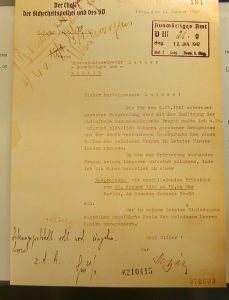
A meeting was scheduled for 9 December 1941 to tackle the implementation of Hitler's nebulousHazy, vague, or ill-defined.Hazy, vague, or ill-defined. goal of ridding Europe of its Jews, but was postponed on 8 December possibly as a result of Pearl Harbour. It was rescheduled for six weeks later, on 20 January 1942. Fifteen representatives from government departments, including the Office of the Four Year Plan, the Foreign Office, the General Government, the SS, the Reich Main Security Office (RHSA), and the Justice, Interior and Eastern Territories ministries, were included in the invitation. As the invitation, dated 29 November 1941, stated, its purpose was 'to make all the necessary preparations with regard to organisational, technical and material measures for a complete solution of the Jewish question in Europe…and in the interest of securing a uniform view among the relevant central agencies of the further tasks concerned with the remaining work on this final solution'. Quoted in Noakes and Pridham, Nazism 1919-1945 Vol 3, p.533 Its purpose was not, therefore, 'to announce the Final Solution, about which attendees already knew. It was to ensure inter-agency co-operation and discuss strategy and financing.'
Quoted in Noakes and Pridham, Nazism 1919-1945 Vol 3, p.533 Its purpose was not, therefore, 'to announce the Final Solution, about which attendees already knew. It was to ensure inter-agency co-operation and discuss strategy and financing.' Milton Goldin, ‘Financing the SS’, History Today 48 (1998)
Milton Goldin, ‘Financing the SS’, History Today 48 (1998)
Although Hitler didn't attend – he rarely attended such meetings, being easily bored with detail and also possibly wanting to separate himself from any criticism – there is no doubt he set the direction. This was Hitler's method for ruling: he stated the general aims and left his underlings to sort it out and fight amongst themselves in the process. A believer in social Darwinism, natural selection of the fittest in society, this method perfectly suited his ideology and his character. At the latest, a meeting on 12 December 1941 between Hitler and his chieftains had already set the tone for the fate of the Jews. Joseph Goebbels recorded the meeting:
This was Hitler's method for ruling: he stated the general aims and left his underlings to sort it out and fight amongst themselves in the process. A believer in social Darwinism, natural selection of the fittest in society, this method perfectly suited his ideology and his character. At the latest, a meeting on 12 December 1941 between Hitler and his chieftains had already set the tone for the fate of the Jews. Joseph Goebbels recorded the meeting:
With regard to the Jews, the Führer is determined to settle things once and for all. World war has arrived, the destruction of Jewry has to be the necessary consequence. This question is to be viewed without sentimentality. We are not here to have sympathy with the Jews but rather sympathy only with our German people. If the German people has now again sacrificed 160,000 dead on the eastern front, then those responsible for this bloody conflict will have to pay with their lives.Quoted in Peter Monteath 'The Führer's Decision' History Today 48 (1998)
The Wannsee Conference
We know roughly what happened at the conference because the Allies discovered the amended minutes of it, known as the Wannsee Protocol, at the end of the war. As bureaucratic as any other government meeting, it started with a discussion of methods already tried and failed, before moving on to the efficient disposal of Europe and the Soviet Union's estimated 11 million Jews.
Europe will be combed through from west to east…The evacuated Jews will initially be brought in stages to so-called transit ghettos in order to be transported from there further east...Large labour gangs will be formed from those fit for work, with the sexes separated, which will be sent to these areas for road construction and undoubtedly a large number of them will drop out through natural wastage. The remainder who survive – and they will certainly be those who have the greatest powers of endurance – will have to be dealt with accordingly. For, if released, they would, as a natural selection of the fittest, form a germ cell from which the Jewish race could regenerate itself.Quoted in Noakes and Pridham Nazism 1919-1945 Vol 3, p.538
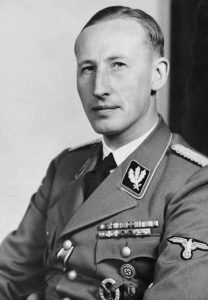
Having established the general aim, the minutes continued with a discussion over which Jews would be included, and, even, the definition of a Jew. 'It is intended not to evacuate Jews over 65 years of age, but to transfer them to an old people's ghettoPart of a town or city in which members of a minority group live, usually as a result of political, social, legal, environmental or economic pressure. Historically it has applied specifically to a Jewish area. – Theresienstadt is envisaged…the war-disabled Jews and Jews with war decorations (Iron Cross First Class) will also be admitted to the Jewish old people's ghettos.' A seemingly thoughtful and sympathetic move, it was suggested for expediency's sake, to 'put an end to the numerous interventions at one stroke.' ibid Jews working in plants essential to the war effort were granted a temporary reprieve, at least until replacements could be found.
ibid Jews working in plants essential to the war effort were granted a temporary reprieve, at least until replacements could be found. Jewish slave labour was an essential part of the German war economy. However, economic necessity was not enough to outweigh ideology. The treatment of MischlingePeople with 'mixed blood', i.e. with both Jewish and Aryan ancestries.People with 'mixed blood', i.e. with both Jewish and Aryan ancestries. People with 'mixed blood', i.e. with both Jewish and Aryan ancestries. and Jews married to Germans was also ineffectively tackled, and the subject would be revisited many times after the conference. It was proposed that all Mischlinge with at least one Jewish parent, except under a few circumstances, would be treated as Jews, as would those with Jewish grandparents who, for example, looked too Jewish. Even those who were exempted from evacuation could still only avoid it if they agreed to 'voluntary' sterilisation. Others, with just one Jewish grandparent, would be treated as German. Depending on their background and the presence of children, Jews married to Germans could expect either to be evacuated or sent to a ghetto.
Jewish slave labour was an essential part of the German war economy. However, economic necessity was not enough to outweigh ideology. The treatment of MischlingePeople with 'mixed blood', i.e. with both Jewish and Aryan ancestries.People with 'mixed blood', i.e. with both Jewish and Aryan ancestries. People with 'mixed blood', i.e. with both Jewish and Aryan ancestries. and Jews married to Germans was also ineffectively tackled, and the subject would be revisited many times after the conference. It was proposed that all Mischlinge with at least one Jewish parent, except under a few circumstances, would be treated as Jews, as would those with Jewish grandparents who, for example, looked too Jewish. Even those who were exempted from evacuation could still only avoid it if they agreed to 'voluntary' sterilisation. Others, with just one Jewish grandparent, would be treated as German. Depending on their background and the presence of children, Jews married to Germans could expect either to be evacuated or sent to a ghetto.
No complaint was raised against the proposals on the grounds of human compassion, just over the 'endless administrative work'. The need was apparent, the direction had been set, and it simply fell to the 15 delegates of the conference to organise it as efficiently as possible, as they would any other task. The HolocaustThe mass murder of Jews and other minority groups under the Nazi regime. was just business. As David Cesarani said of Eichmann, 'Whether he like it or not…in order to preserve his position and his office Eichmann embarked upon a career in genocide.' David Cesarani, Eichmann: His Life and Crimes, London: Random House (2005), p.116
David Cesarani, Eichmann: His Life and Crimes, London: Random House (2005), p.116
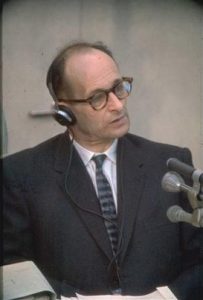
The minutes did not, of course, reflect the whole of the meeting. Rather, they were the sanitised version, designed for a reasonably wide readership. As Adolf Eichmann said at his trial in 1960, 'certain over-plain talk and jargon expressions had to be rendered into office language by me.' Quoted in Cesarani, Eichmann, p.114 Discussion of the actual means of genocide were removed from the official record, but those in the know would be able to read between the lines. Evacuation, which in Britain had come to mean the removal of people from harm to safety, for the Jews meant certain death. People sent to Theresienstadt had only slightly more chance of surviving the war: of the 139,654 'privileged' Jews who were sent there, only 17,320 made it out alive.
Quoted in Cesarani, Eichmann, p.114 Discussion of the actual means of genocide were removed from the official record, but those in the know would be able to read between the lines. Evacuation, which in Britain had come to mean the removal of people from harm to safety, for the Jews meant certain death. People sent to Theresienstadt had only slightly more chance of surviving the war: of the 139,654 'privileged' Jews who were sent there, only 17,320 made it out alive. Noakes and Pridham Nazism 1919-1945 Vol 3, p.542
Noakes and Pridham Nazism 1919-1945 Vol 3, p.542
Over cognac after the formal meeting, attendees quite complacently and explicitly talked 'of killing, elimination, and annihilation', ibid allowing Reinhard Heydrich to reflect in his diary 'Happily the basic principles of the practical implementation of the final solution of the Jewish questions have been set.'
ibid allowing Reinhard Heydrich to reflect in his diary 'Happily the basic principles of the practical implementation of the final solution of the Jewish questions have been set.'
Things to think about
- What caused the Holocaust?
- Was the Final Solution in some way planned from the very beginning, or was it a reaction to events outside the Nazis' direct control?
- What role did Hitler have in directing the Final Solution?
- How does bureaucracy and 'a job well done' morph into genocide?
- What, if anything, does the Holocaust tell us about humanity?
Things to do
- The minutes of the Wannsee Conference are freely available online. One copy can be found here. In addition, Kenneth Branagh, together with the BBC and HBO made an excellent film based on the protocol.
- There are a number of Holocaust memorial museums across the world. The British one is in Nottinghamshire. You can find out more about it here.
- Wannsee House is now a museum and memorial. If you happen to be in Berlin, you can visit free of charge. You can find out more here.
Further reading
There is a wealth of information available on the Wannsee Conference and on the Final Solution. Mark Roseman's The Wannsee Conference and the Final Solution: a Reconsideration is recent and well-respected, as is Ian Kershaw's Hitler, the Germans and the Final Solution. One of the best people to read to gain an understanding of Nazi Germany and Hitler is Ian Kershaw. He has written extensively on the Third Reich, but one (or two) of his best is the biography of Hitler that was first published in two parts and has now been abridged into one volume. The other narrativeA story; in the writing of history it usually describes an approach that favours story over analysis. of the Nazi regime that is essential reading is Frank McDonough's new two-volume book, The Hitler Years.  Only the first volume is available as of January 2020.
Only the first volume is available as of January 2020.
- Log in to post comments


